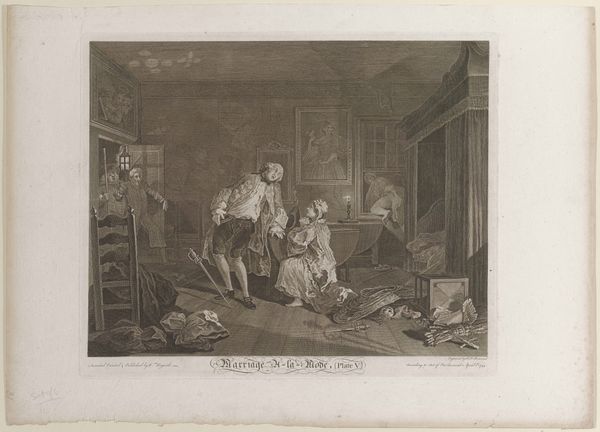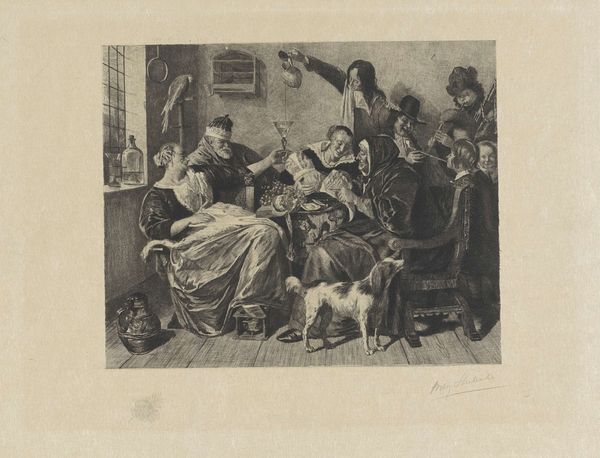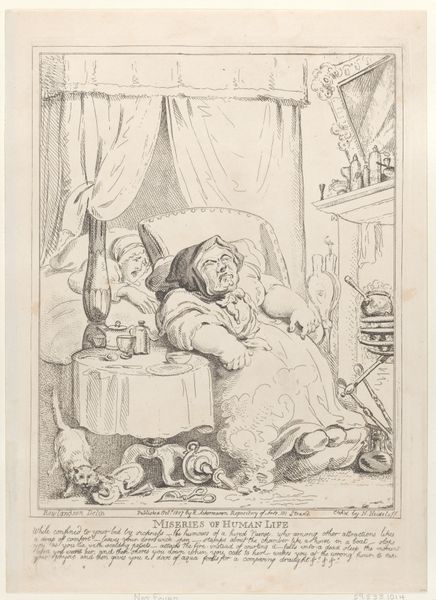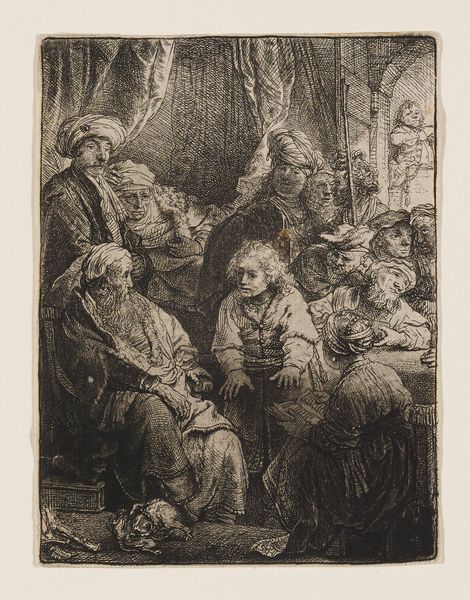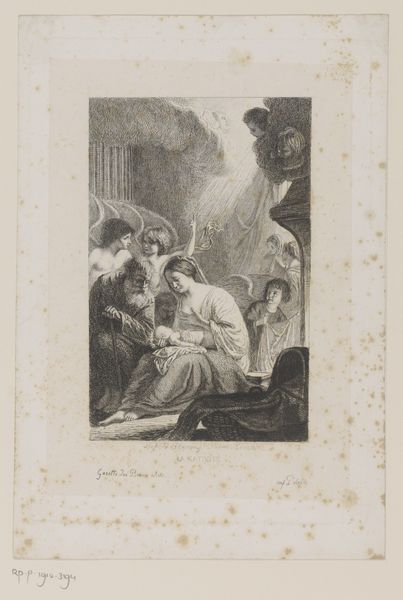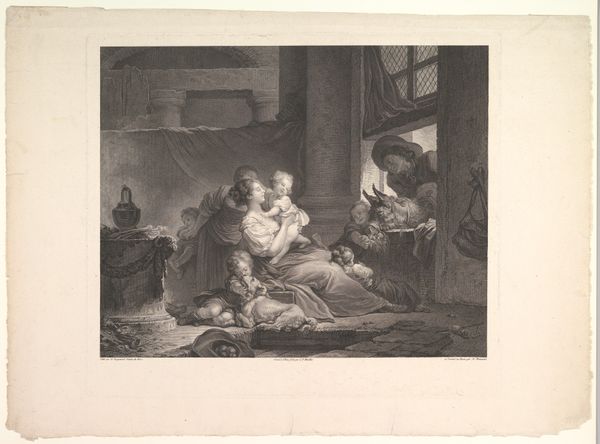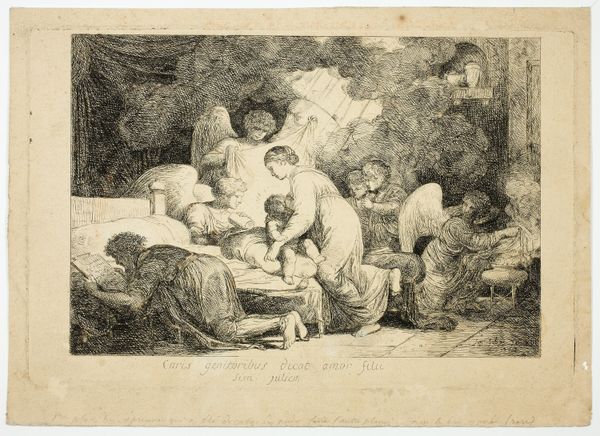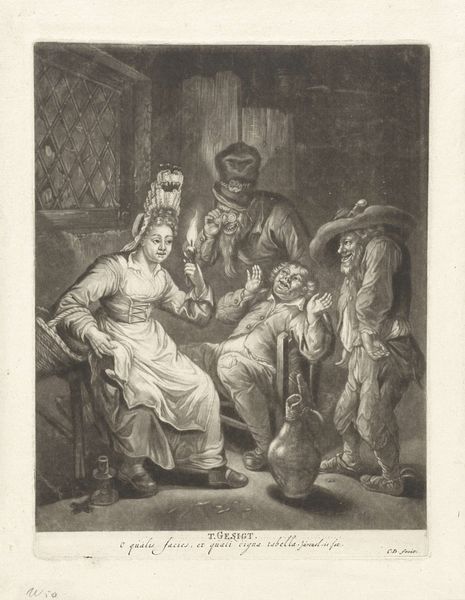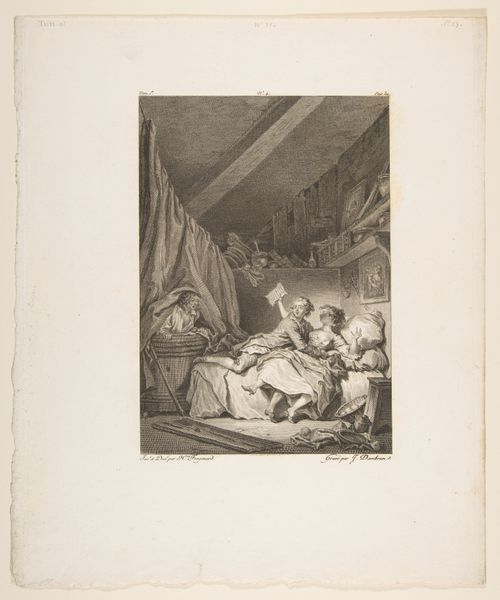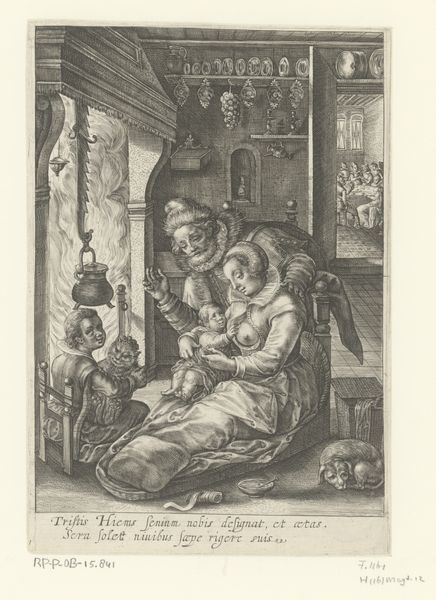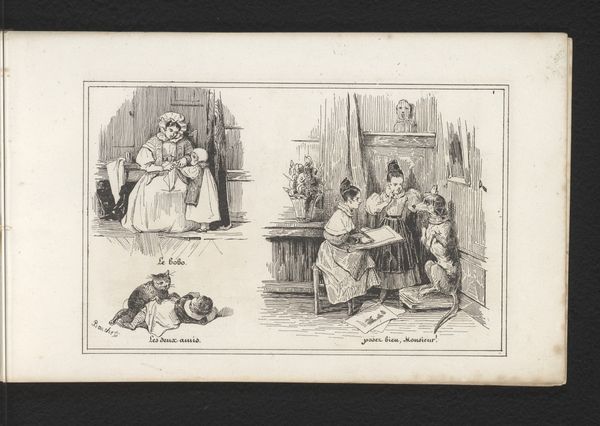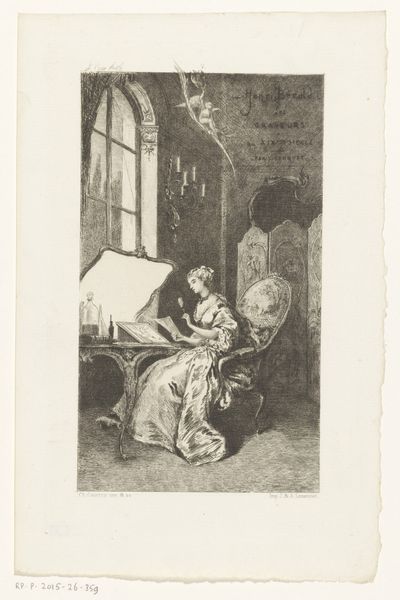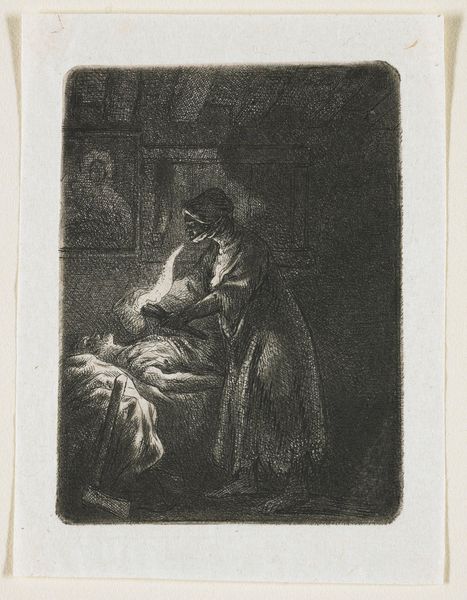
Dimensions: height 85 mm, width 51 mm
Copyright: Rijks Museum: Open Domain
Art Historian: Editor: I'm looking at "Fotoreproductie van Glucklige Eltern," a drawing from somewhere between 1870 and 1900 by an anonymous artist. It seems to be made with graphite and charcoal on toned paper, and it feels quite domestic, a scene of happy parents gazing at their baby in a cot with two dogs nearby. What do you see in this piece? Art Historian: Well, considering the period and the materials, I immediately think about the rise of mass reproduction. The fact that it's a "fotoreproductie" suggests it's a copy of something else, designed for wider consumption. Graphite and charcoal were relatively accessible, pointing to a market interested in affordable art. What does the paper itself tell you? Editor: Hmm, toned paper suggests a conscious aesthetic choice rather than just availability. Maybe they wanted to give it an antique look even when it was made? Art Historian: Precisely! The material choice contributes to the perceived "authenticity" of the scene, perhaps masking its status as a reproduction. It touches on ideas of labor, both the initial creation and the reproduction. Also, notice how the portrayal of domestic bliss—happy parents, pets— reinforces certain social values prevalent at the time. This is more than just a picture of a family; it's a carefully constructed presentation reflecting desired societal norms that could be consumed on a mass scale. What's particularly striking to me is that it makes you wonder about the original image, and how much that piece was celebrated, warranting a reproduction such as this. Editor: I never considered it that way! I was caught up in the sentimentality, but thinking about its reproduction and intended market really changes how I see it. It's less about the emotion in the picture and more about how it was intended to be received and purchased. Art Historian: Exactly! By examining the materials, production methods, and context, we reveal how art is intrinsically linked to labor, economics, and social values. The consumption of this image likely perpetuated those values at that time. Editor: I'll definitely think more about materials and means of production when I look at art now. It adds a whole new dimension.
Comments
No comments
Be the first to comment and join the conversation on the ultimate creative platform.
